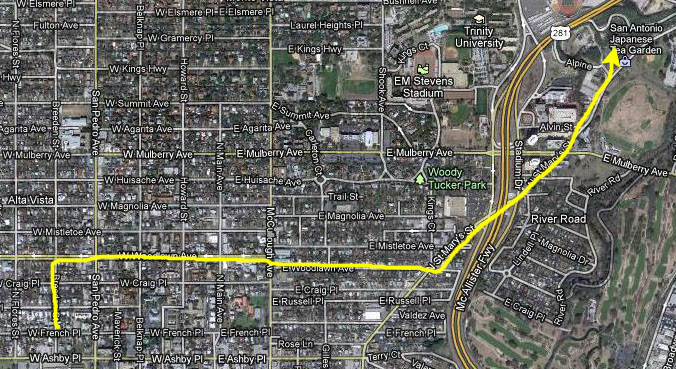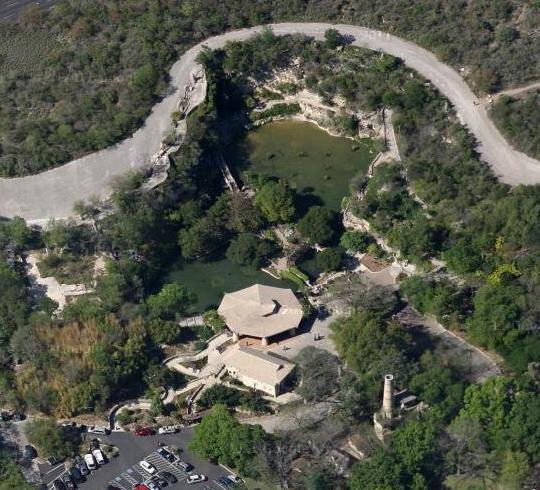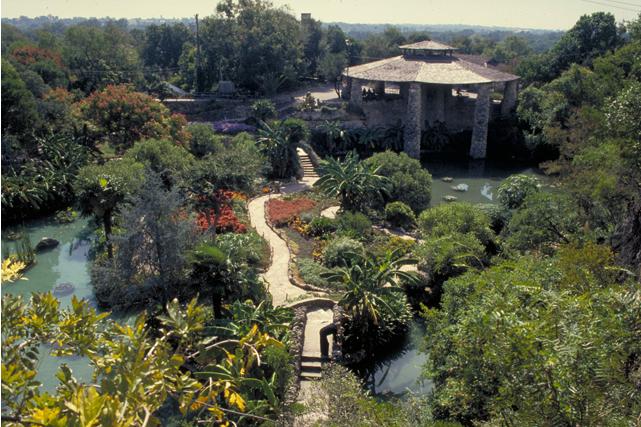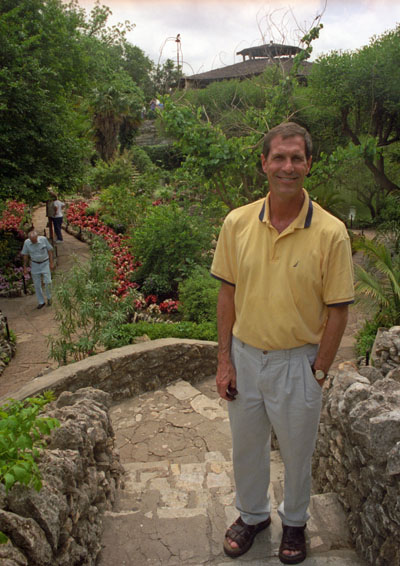
A Unique Bed & Breakfast In the Heart of San Antonio's Historic District
Prudence has been encouraging Fred and I to come down to San Antonio more frequently, and so we've set aside a weekend to drive down and see her, Ron and Guy Blair. I'll also be doing some additional work on the web site for Ruckman Haus Bed & Breakfast.
A Visit to the Japanese Tea Gardens
In 1915, Mrs. Emma Koehler, widow of Pearl Brewery owner Otto Koehler, donated additional land adjacent to the quarry for a public park, and the City Parks Commissioner, Ray Lambert, was faced with a challenge to create one. He ultimately came up with the idea of a lily pond which eventually became the Japanese Tea Garden. Even without significant funds, but with plans from his park engineer, Lambert was able to construct the Garden. Between July 1917 and May 1918, Lambert used prison labor to shape the quarry into a complex that included walkways, stone arch bridges, an island and a Japanese pagoda. The garden was termed the lily pond, and local residents donated bulbs to beautify the area. Exotic plants were provided by the City nursery and the City Public Service Company donated the lighting system. The pagoda was roofed with palm leaves from trees in City parks. When completed, Lambert had spent only $7,000. In 1919, The American City magazine reported that "the city of San Antonio has recently completed a municipal lily pond and a Japanese garden which we believe are unique."
In 1926, at the City's invitation, Kimi Eizo Jingu, a local Japanese-American artist, moved to the garden and opened the Bamboo Room, where light lunches and tea were sold. After Mr. Jingu's death in the late 1930s, his family continued to operate the tea garden until 1942, when they were evicted because of anti-Japanese sentiment during World War II. A Chinese-American family operated the facility until the early 1960s, and it was known as the Chinese Sunken Garden. In 1984, the area was rededicated as the Japanese Tea Garden in a ceremony attended by the Jingu's children and representatives of the Japanese government.
In recognition of the Tea Garden's origin as a rock quarry that played a prominent role in the development of the cement business, as well as its later redevelopment as a garden, the site is designated as a Texas Civil Engineering Landmark, a Registered Texas Historic Landmark, and is listed on the National Register of Historic Places.
I am creating this album page in early 2012, and I can add that the garden underwent a renovation beginning in May 2007 in which the ponds and waterfall were repaired, and a recirculation system added to provide a safe habitat for new Koi and aquatic plants. This phase of what is to be a continuing expansion, cost over $1.5 million- over 200 times the cost to build the park originally. A grand reopening ceremony was held on March 8, 2008, which was attended by the Lambert family, descendents of Park Commissioner Ray Lambert, as well as numerous members of the Jingu family, including Mabel Jingu Enkoji, who was born in the Jingu House and lived at the garden as a child.
The San Antonio Parks Foundation contributed $100,000 toward the Master Plan for the Garden, as well as $800,000 toward the restoration o the ponds and waterfall. The Foundation continues to fund-raise for the restoration. You'll have a chance, later in this photo album, to see the results of this renovation, as we came back for an extended visit.
Today, though, Fred, Prudence, Guy, Ron and I have come by for a short walk through the gardens.
Other than visit the Tea Gardens, we didn't do much on this trip down to San Antonio, but then again we really don't need to. It is always a pleasure to visit Prudence and Ron; they are great hosts and very good friends.
|
||||||||||||||||||||||
|
Ron and Prudence Ruckman
stay@ruckmanhaus.com |







